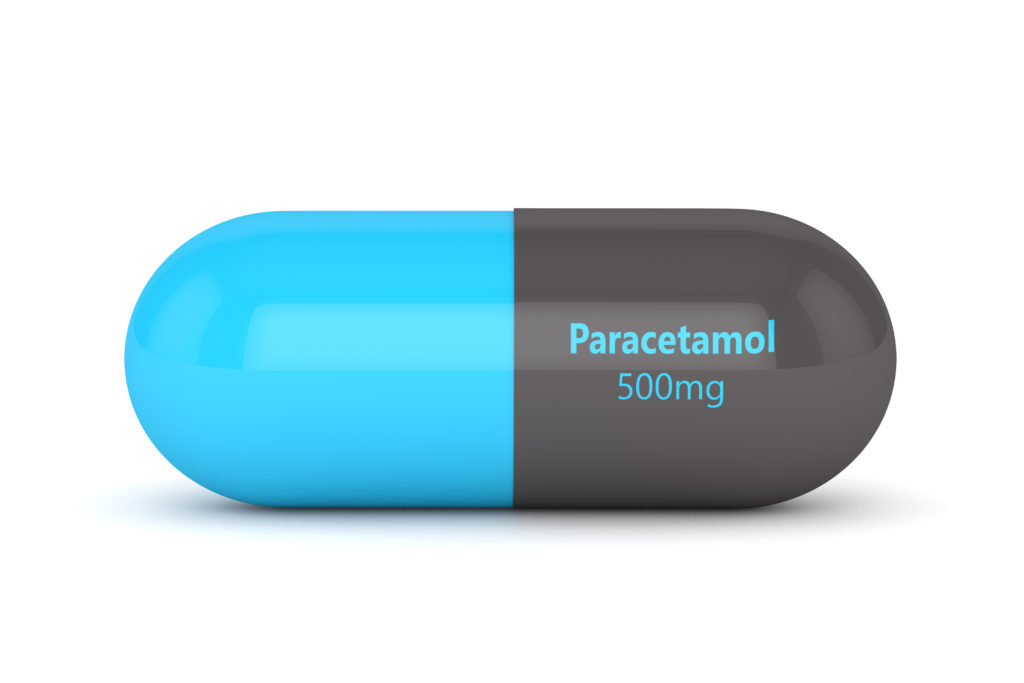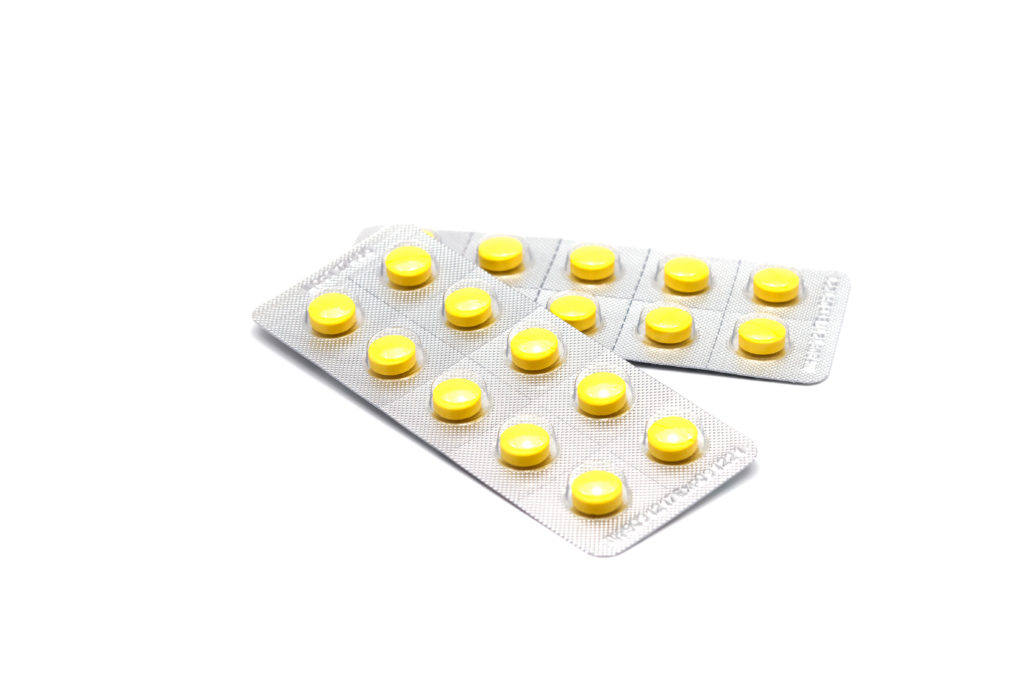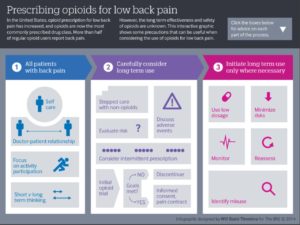Medicines for Low Back Pain Q & A
-

-

What is the benefit of paracetamol for acute low back pain?
A: Randomized controlled trials have found that regular dosing of paracetamol has no effect on recovery times when compared to placebo in acute low back pain [2].
-

What is the efficacy of non-steroidal anti-inflammatory drugs (NSAIDs) for LBP?
A: Level 1 evidence states that NSAIDs are effective for spinal pain but have no clinically important difference in outcomes to placebo. There are no simple analgesics that have clinically important effects for spinal pain over placebo [3].
-

What are the effects of opiod analgesics for acute and chronic low back pain?
A:
The recommendations below, published in 2015, provide clarity on the use of opioids for both acute and chronic low back pain [5].

This brief (10 minute) video provides valuable insight into the benefits, side effects and uses of opioid medication for chronic pain. A useful resource to aid physiotherapists in educating and advising their patients on opioid use.
- Machado, G. C., Maher, C. G., Ferreira, P. H., Pinheiro, M. B., Lin, C.-W. C., Day, R. O., . . . Ferreira, M. L. (2015). Efficacy and safety of paracetamol for spinal pain and osteoarthritis: systematic review and meta-analysis of randomised placebo controlled trials. BMJ : British Medical Journal, 350. doi:10.1136/bmj.h1225
- Williams, C. M., Maher, C. G., Latimer, J., McLachlan, A. J., Hancock, M. J., Day, R. O., & Lin, C.-W. C. (2014). Efficacy of paracetamol for acute low-back pain: a double-blind, randomised controlled trial. The Lancet, 384(9954), 1586-1596. doi:10.1016/S0140-6736(14)60805-9
- Machado, G. C., Maher, C. G., Ferreira, P. H., Day, R. O., Pinheiro, M. B., & Ferreira, M. L. (2017). Non-steroidal anti-inflammatory drugs for spinal pain: a systematic review and meta-analysis. Annals of the Rheumatic Diseases, 76(7), 1269-1278. doi:10.1136/annrheumdis-2016-210597
- Abdel Shaheed, C., Maher, C. G., Williams, K. A., Day, R., & McLachlan, A. J. (2016). Efficacy, Tolerability, and Dose-Dependent Effects of Opioid Analgesics for Low Back Pain: A Systematic Review and Meta-analysis. JAMA Intern Med, 176(7), 958-968. doi:10.1001/jamainternmed.2016.1251
- Deyo, R. A., Von Korff, M., & Duhrkoop, D. (2015). Opioids for low back pain. BMJ, 350, g6380. doi:10.1136/bmj.g6380
